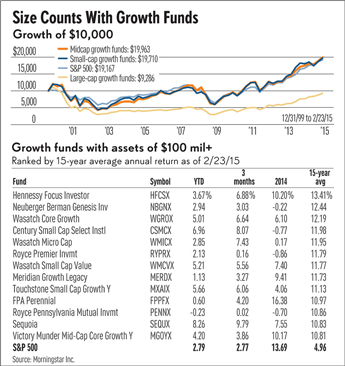ETFs Made Inroads With Investors in 05
Post on: 19 Апрель, 2015 No Comment

By Meg Richards
Associated Press
Sunday, January 1, 2006
It was another year of growth for exchange-traded funds, as the number of offerings and asset levels swelled even further in 2005. In terms of dollars, ETFs still make up only a small fraction of the overall mutual fund market, but these products are rapidly moving into the mainstream as more investors discover them.
With about 200 ETFs on the market, representing all manner of indexes, sectors, world regions, countries and even gold, fund providers are seeking new and interesting ways to expand. The next areas of growth are likely to reach into parts of the market that were once the exclusive province of more sophisticated investors, such as commodities and currencies, said Ronald L. DeLegge, publisher and editor of ETFGuide.com. On the edge of this trend, he said, Rydex Investments recently launched the first currency ETF, which tracks the price of the euro.
You can just imagine: We have one ETF that tracks the price of the euro; how many different types of currency are out there? We’re starting to see a taste of what’s to come, DeLegge said. Why not the yen or the British pound? This is the evolution. They’re starting to equitize assets that traditionally in the past have not been equitized.
For individuals, the advantage of ETFs is that they make it easier and cheaper to access niches of the market. If there was any doubt of the interest in such funds, consider that during 2005, about $4 billion poured into ETFs that track the price of gold. New offerings, focused on other commodities such as silver and oil, are in the wings for 2006, said Don Cassidy, director of fund analysis for Lipper Inc.
For the first 11 months of the year, total asset levels of ETFs stood at $288.95 billion, according to the Investment Company Institute, up from $226.2 billion at the end of 2004. That’s still just a drop in the bucket compared with the $4.4 trillion in traditional equity mutual funds.
There is growing evidence that ETFs are making a significant mark, however. A close look at fund flows suggests that they’re making a dent in traditional index funds, Cassidy said. There’s little doubt that ETFs’ low expenses, lack of redemption fees and tax efficiency appeal to traditionally cost-conscious index investors. And the fact that they can be traded intraday, unlike traditional mutual funds, also works in their favor. This kind of flexibility can help investors be a little less frozen when trying to make decisions, he said.
If you’re saying, ‘I think this year China, or Japan, is the winning place,’ well, you have to agonize over that decision more if you’re choosing among mutual funds, Cassidy said. And while you may not go into an ETF saying, ‘I’m going to trade this thing if avian flu breaks out,’ you can be out of there in 20 minutes. So that takes some pressure off.

Of the 45 new ETFs introduced in 2005, 32 were launched by PowerShares Capital Management LLC, making it one of the year’s most active companies. Rather than market to institutional investors, which have traditionally been big consumers of ETFs, PowerShares chief executive Bruce Bond said the company has worked to educate brokers, planners and advisers about its products so the message can be carried to retail investors. The strategy seems to be working, he said.
I do think that over the next year, the next couple years, you’re going to see ETFs move much more into the mainstream than they are today, Bond said. In 2005, I think most people didn’t really consider ETFs as a viable alternative for all of their investment dollars. In 2006, I think many more people will, and in 2007, ETFs will be vying for all the investment dollars right alongside traditional mutual funds.
PowerShares differs from other ETF providers in that it takes a semi-active approach to investing. It pegs its products to nontraditional, intelligent indexes built using quantitative analysis. This reflects the philosophy that rather than merely mimicking benchmarks, indexes can be anything you want to make them be, Bond said. It’s an idea that has put PowerShares on the edge of a new trend and reignited the debate in some circles over active vs. passive investing.
These are not your mom and dad’s indexes, DeLegge said. PowerShares has a very different perspective from any other ETF company out there; they’ve created a nice niche. It’s still small, but I think it’s an interesting development, and it’s one of the things that will become more prevalent in ’06.
Until ETFs achieve a greater presence in the massive retirement market, DeLegge and others agree, they are likely to continue to be a niche product in the fund world.
Further down the road, federal regulators may find a way to approve ETF classes of traditional mutual funds, even those that are actively managed, Lipper’s Cassidy said. Such a development would go a long way toward taking ETFs solidly into the mainstream.














